Tusheti part 2: Sheep Skin Grail Quest continues
And Why I feel this family of cheeses is important
I spoke too soon. I found my grail cheese at a camp a bit further up the valley. Made in a wooden vat and preserved inside a sheep skin, by David Shortishvili and his brigade of herders (the term brigade comes from the Soviet era and is still used). The skins are prepared in spring from a full grown sheep by cutting off the head and front legs, making 3 holes. The whole rear end including both back legs is taken off, making one large hole, the top of the sack. At this point the hide is removed with only the hands, an arm slid between the hide and the body. The sheep had been scissor sheared before slaughter, which leaves 1-2 centimeters of wool on. It is turned inside out and left to dry in an attic above a house heated by wood fire, getting lightly smoked and becoming like crinkly leather.
The day before it is to be used, it is soaked in hot water until it becomes soft, remarkably similar to a fresh hide. With the wool side out, the neck and one leg are tied tightly with twine. It is turned back inside out and the main opening of the sack tied shut temporarily. This leaves one leg untied and sticking out. It is used as a blowhole to inflate the hide, which is surprisingly stretchy. This hole is also tied and the skin balloon pressed on hard to make sure it has no leaks.
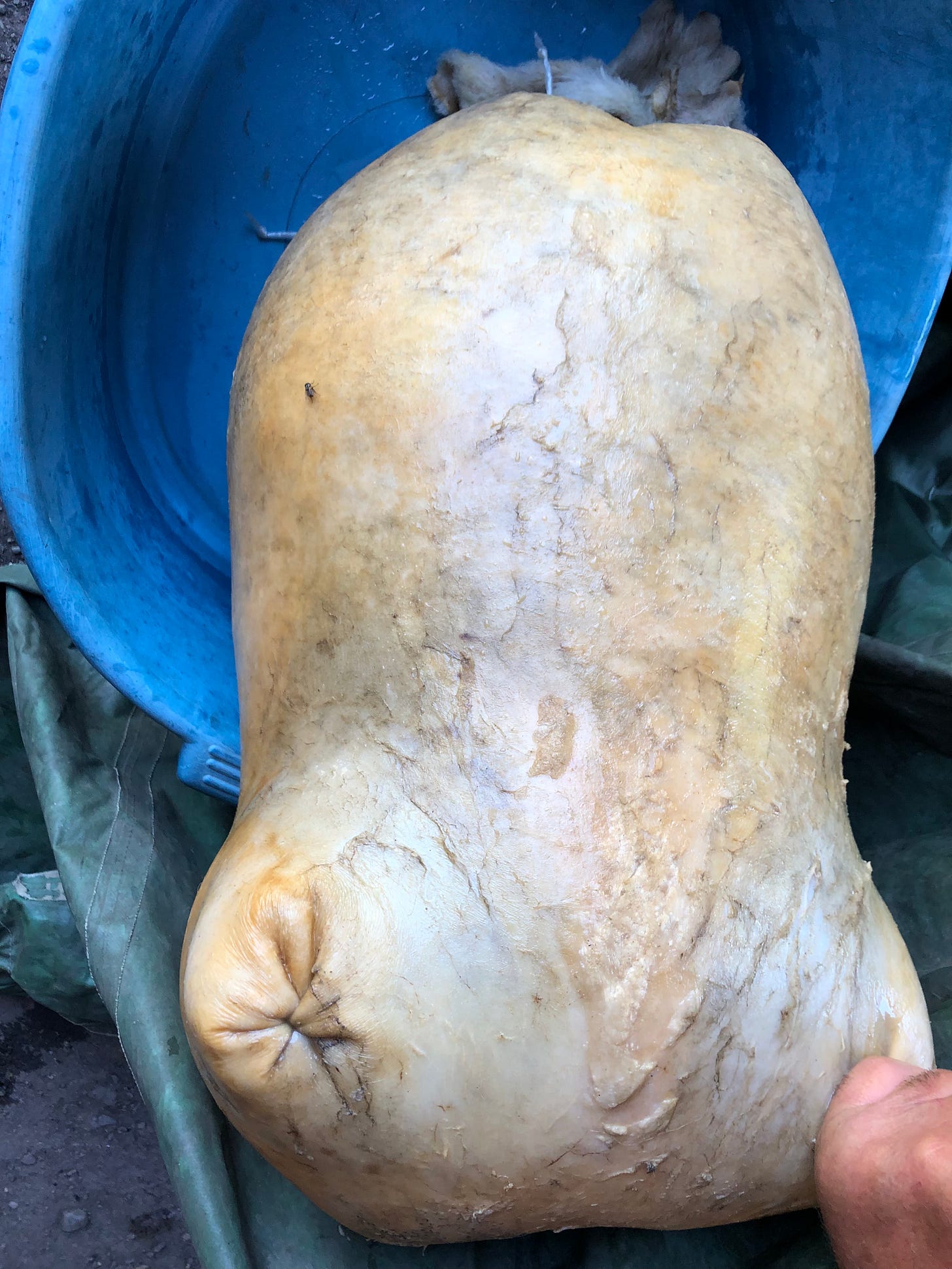
This Guda is made similar to how I described in the last post with the following differences. Two wooden barrels are used as cheese vats: one for the mornings sheep milk, and one for cow milk: combined previous evening (skimmed for butter) and morning. When the sheep cheese is taken out of the vat and lightly pressed, it the goes almost immediately into the prepared hide, with the same ample salt but no whey. The liquid that will form the brine will come out of the cheese itself. It is a fast make, perfect for herders who have other concerns, like keeping vigil over the animals, and having mid day naps
When I saw it made they also added a cheese from the day before, that apparently didn’t fit in that days sack. Each sack hold 4-5 rounds, they appear to vary in size. Once full, the top of the sack is tied tightly with twine. There is a good video of this on my Instagram. The single protruding leg is blown into, inflating the sack. This is tied off and it sits in a shaded room containing cow cheeses in plastic, and sheep in skins. The skins dry again, besides some softer spots that likely diminish with time. Salt crystallizes on the outside, to me indicating that some whey is escaping through the skin pores.
I am fascinated with this family of cheeses made in skins sack because of their antiquity, their use of an important gift of livestock, and their representation of the mobile pastoralist lifestyle. These are some of the oldest aged cheeses on the planet. When I eat this cheese I imagine this is what cheese may have tasted like 4,000 years ago. Salty. Like it came from an animal. Zero fancy food vibes
These cheeses are an acknowledgment of the animal sacrifice element implicit in dairy foods. No cheese better puts this reality on the table: killing animals is a prerequisite of eating cheese, or drinking milk. An animal hide is a thing of incredible valuable that has been recently lost, it’s not seen as economical to process hides in many countries. It’s the same economic system that would slaughter Bison for their hides and leave the meat to rot on the prairie. This cheese represents the “whole Buffalo” mentality. As full of misnomer and romance as that phrase is, it’s a reality that many humans are seeking to return to: when you take a life you honor the animal by using all the gifts that are given, and taken.
Mobile pastoralism is an umbrella term including nomadic, semi-nomadic, and transhumant pastoralists like the Tushetians. Cellars and dedicated aging caves were and are rare things for these groups. Other means of preserving milk in the form of aged cheese are necessary. With these skin sack cheeses, the skin becomes the aging space. It is mobile. In essence it is a brine aged cheese, with the skin being the vessel for the brine. You are protecting the cheese from spoilage in a hot dry climate using salt, water, an animal hide you skillfully adapted for this purpose. It’s ingenious, and represents the versatility, resourceful and reliance on livestock that causes me to find these communities and their foods relevant, worth studying and documenting.
The grail is here, in a beat shack leaning heavily to one side. In an inside out sheep skin holding preserved, distilled grasslands that are maintained by a pastoral culture. Maybe the culture itself is the grail, representing a more sane way of relating to land, livestock and other humans? The warmth with which people here welcome me, share their food, homes, and lives is very heavy. This is how people should treat each. Maybe the valleys and mountains are the grail, and the people, the cheese just reflections of this land? Maybe the whole planet is the grail, and this cheese just reminds me that I have been walking around inside of it, searching for the sacredness that was around me the whole time. Maybe.

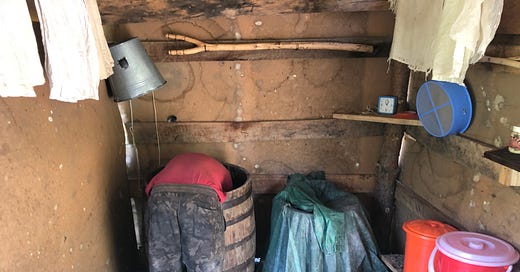



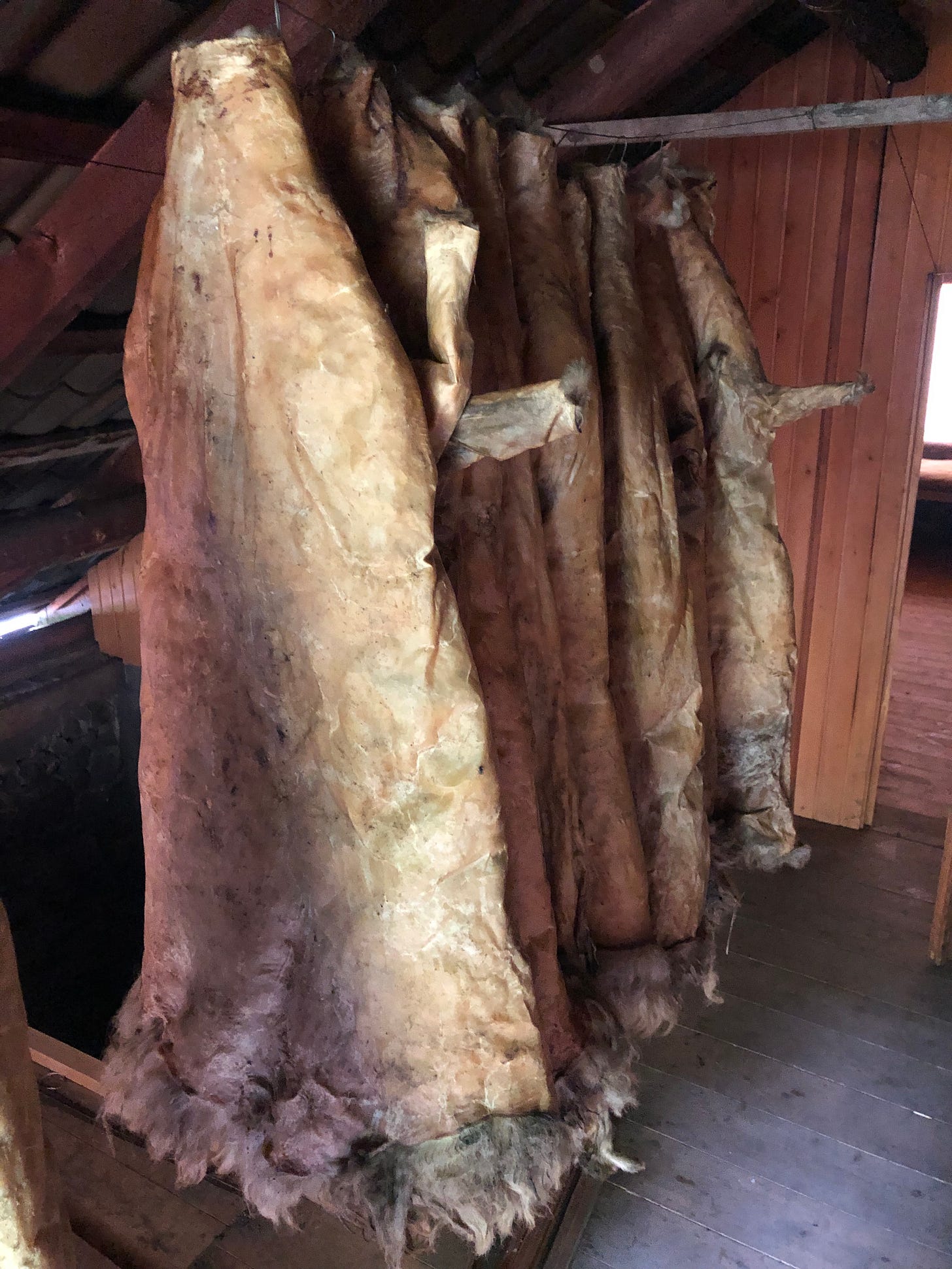
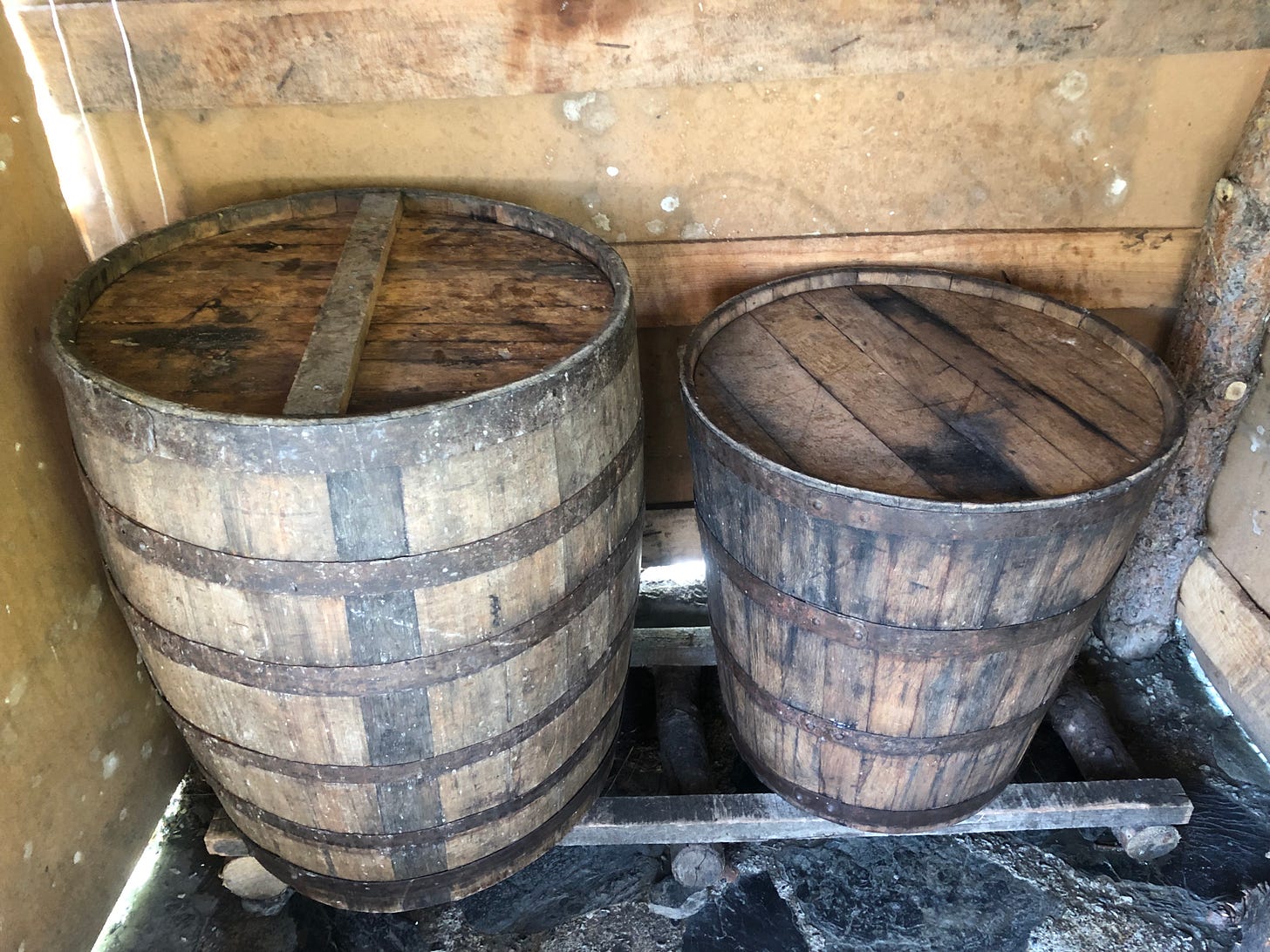
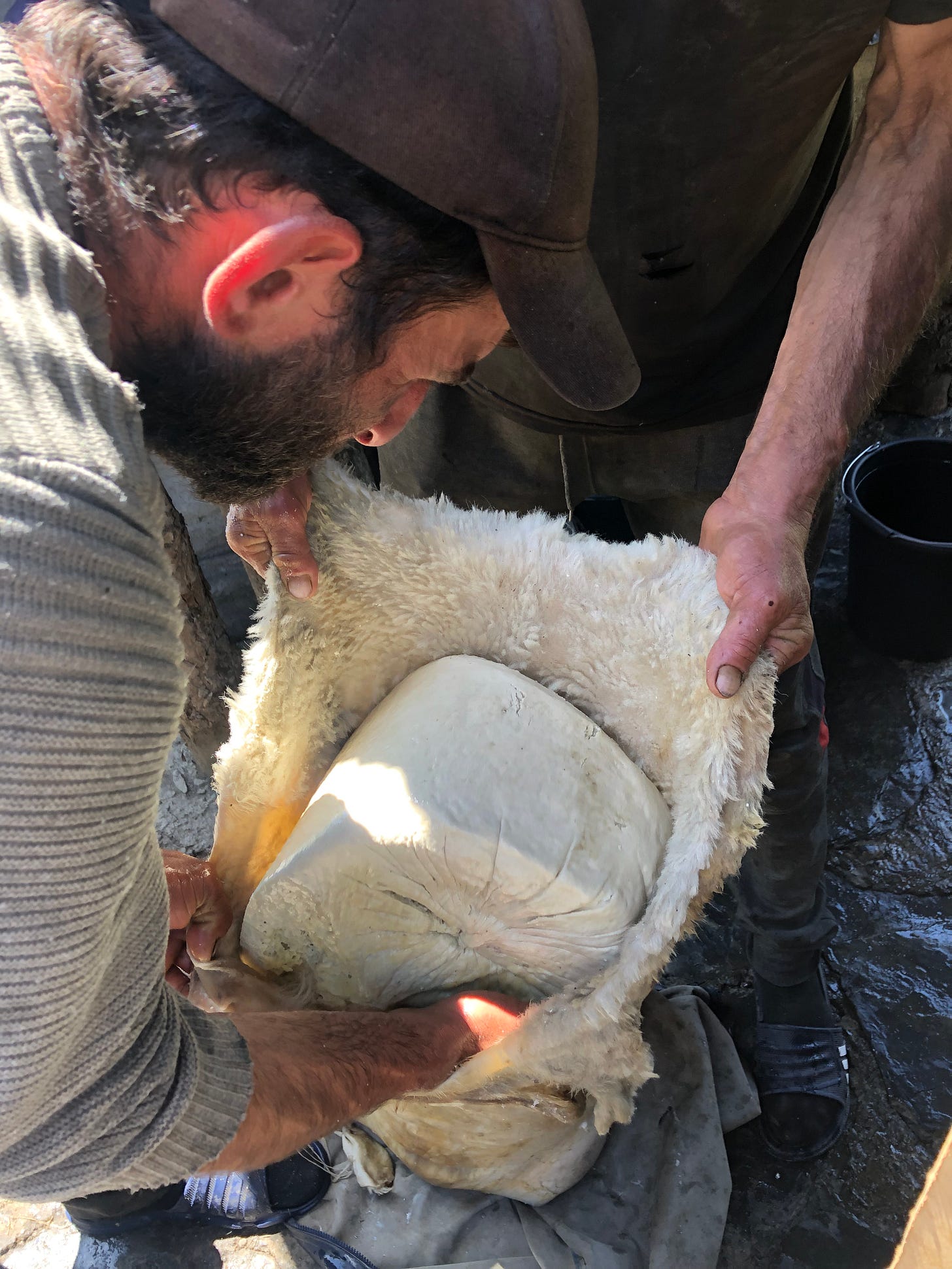
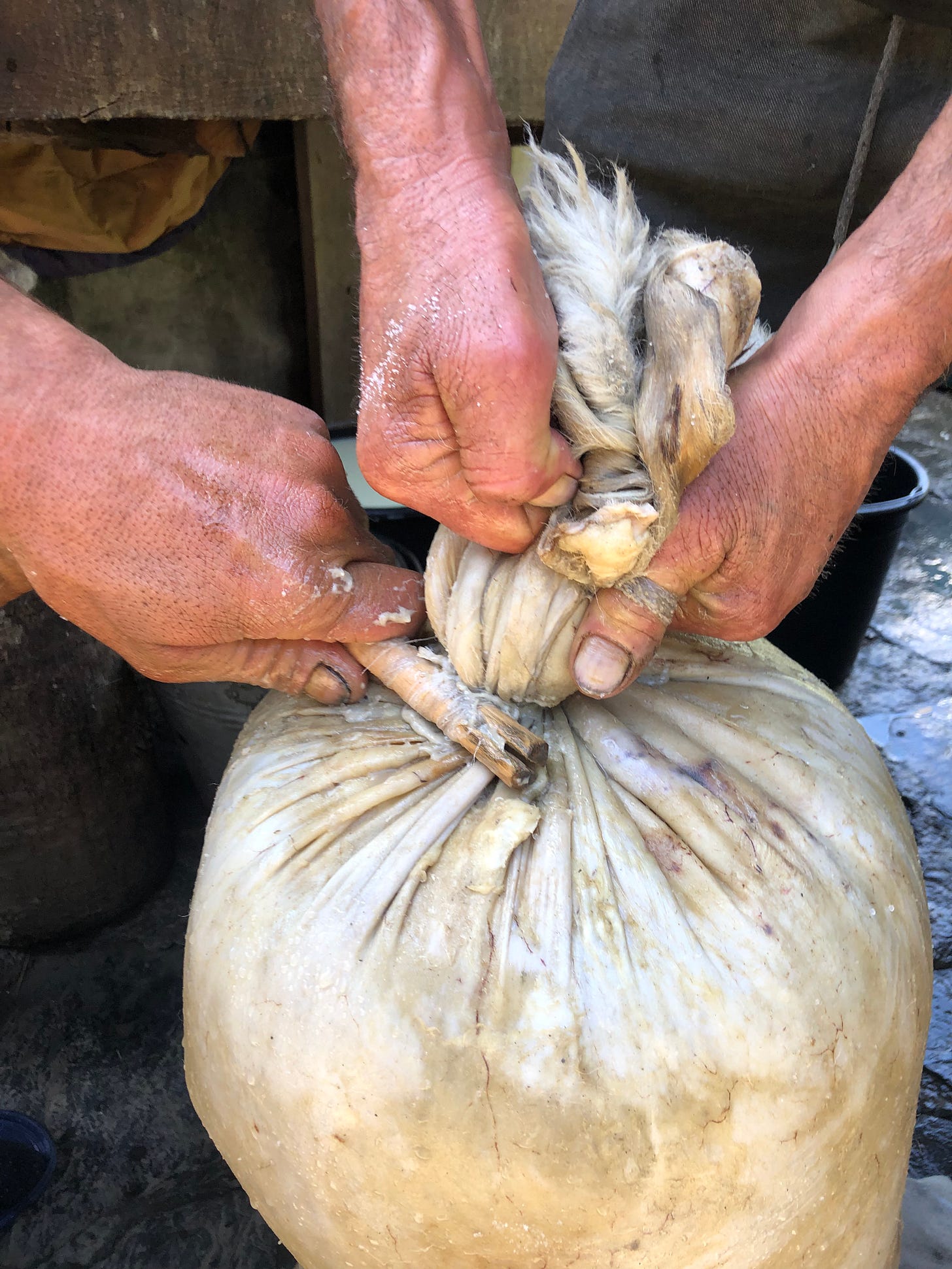
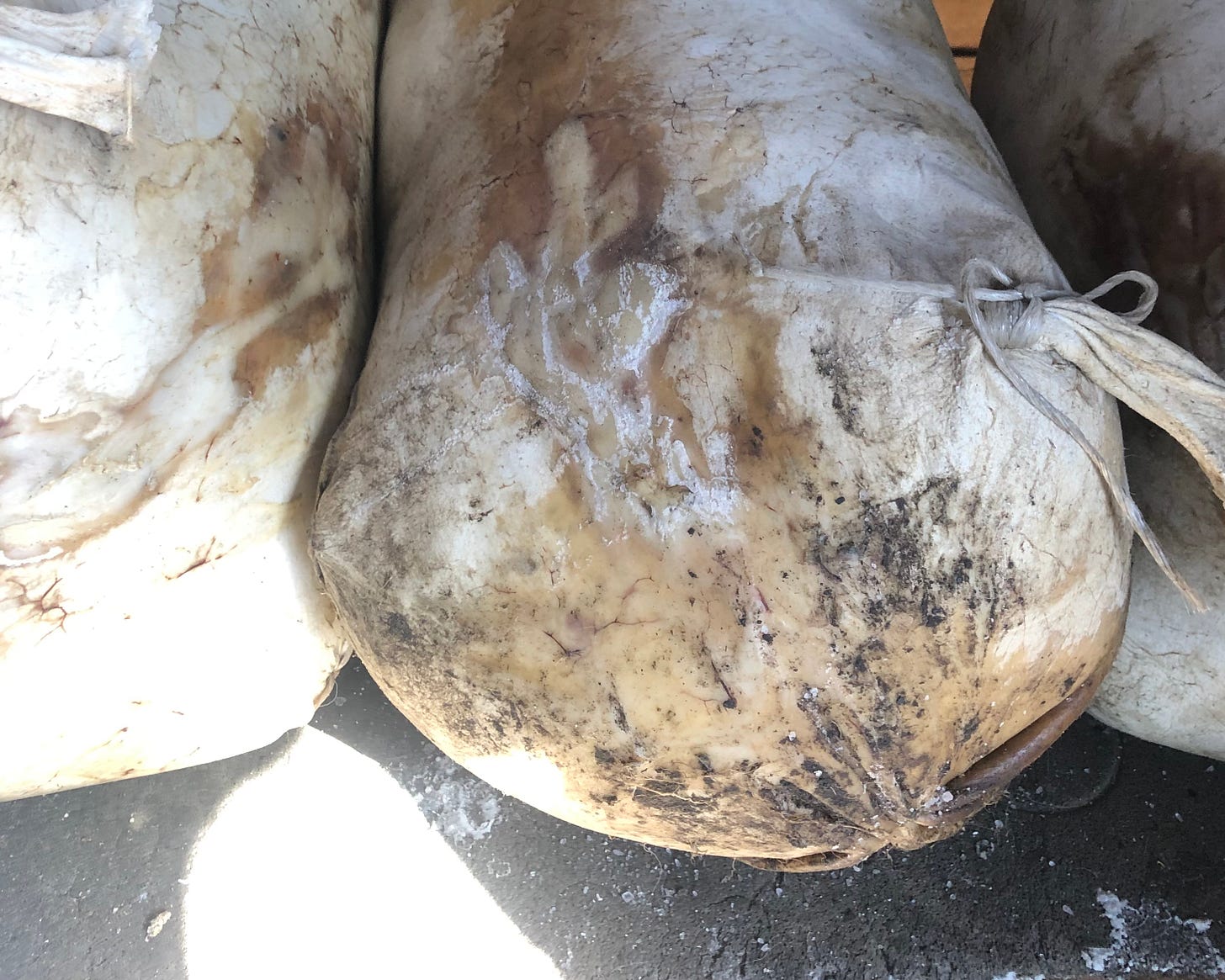
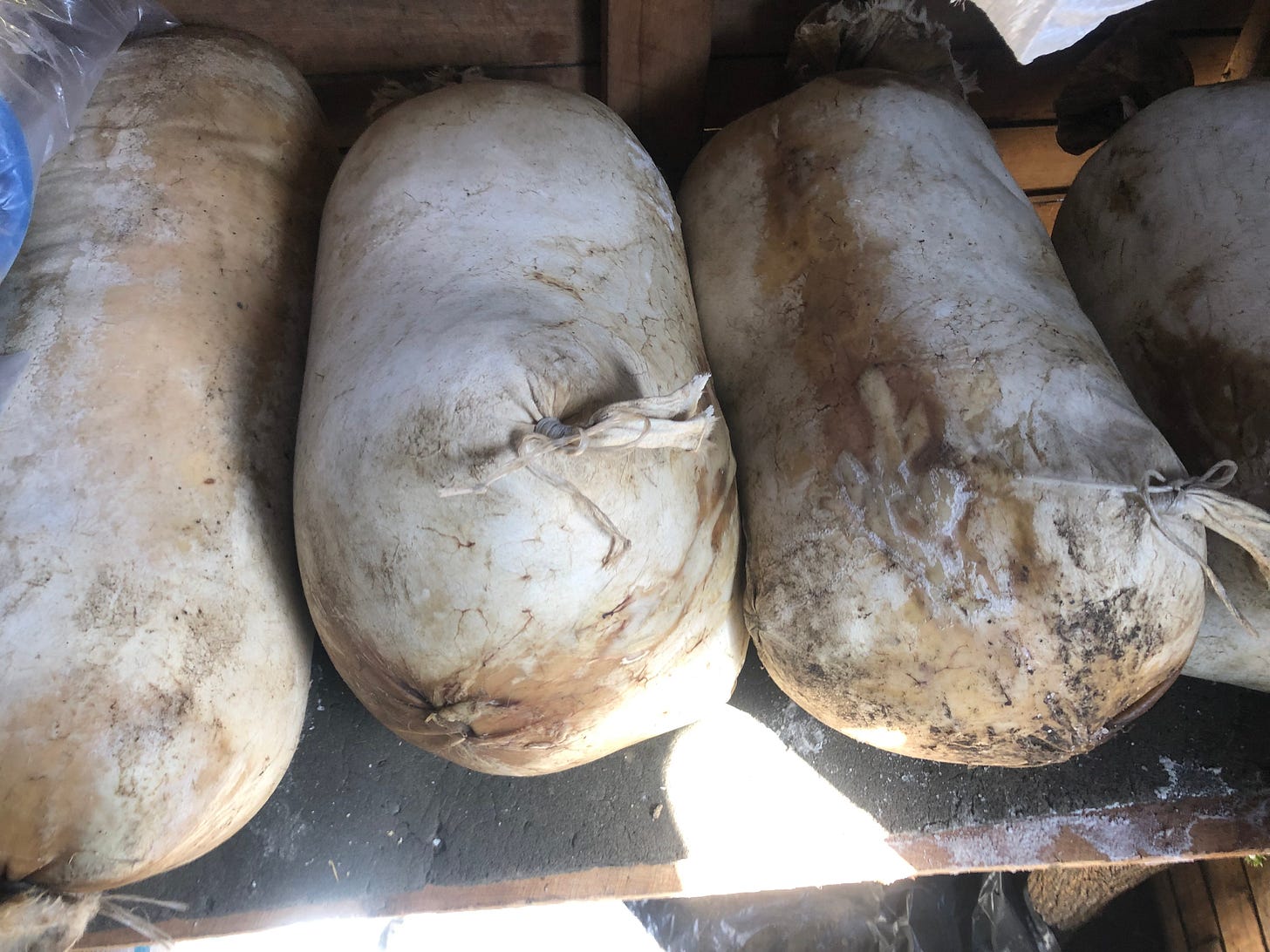
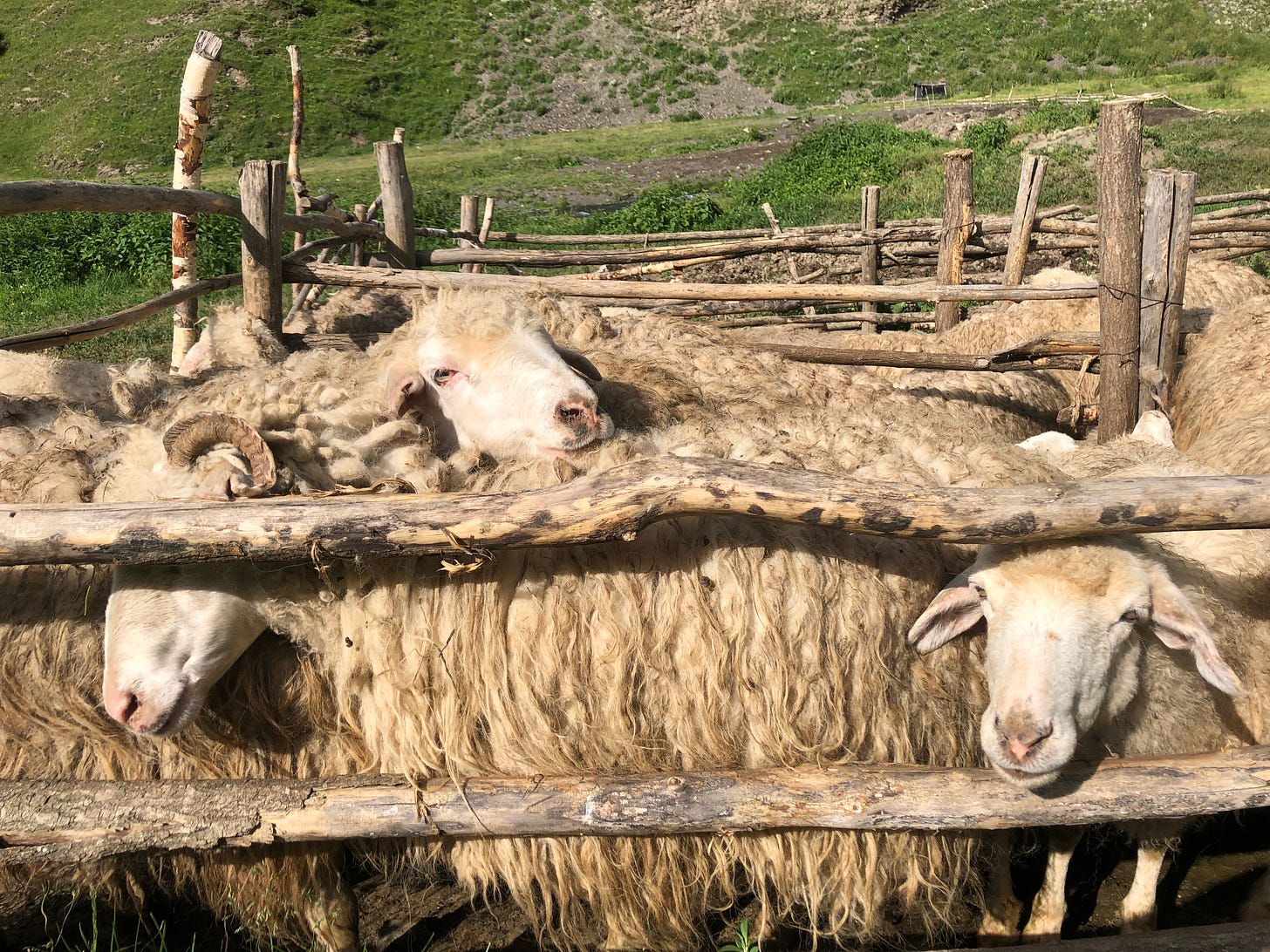
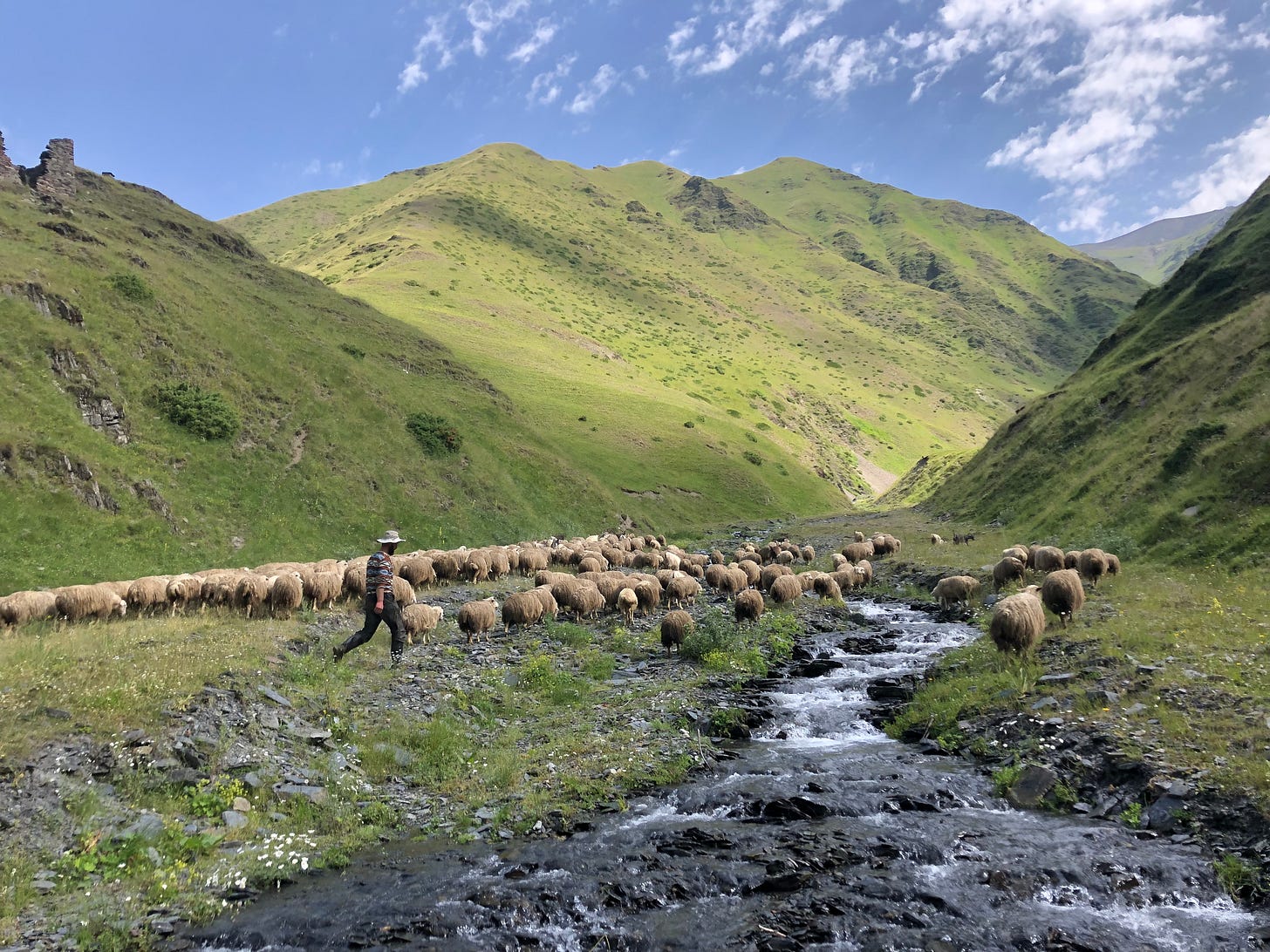

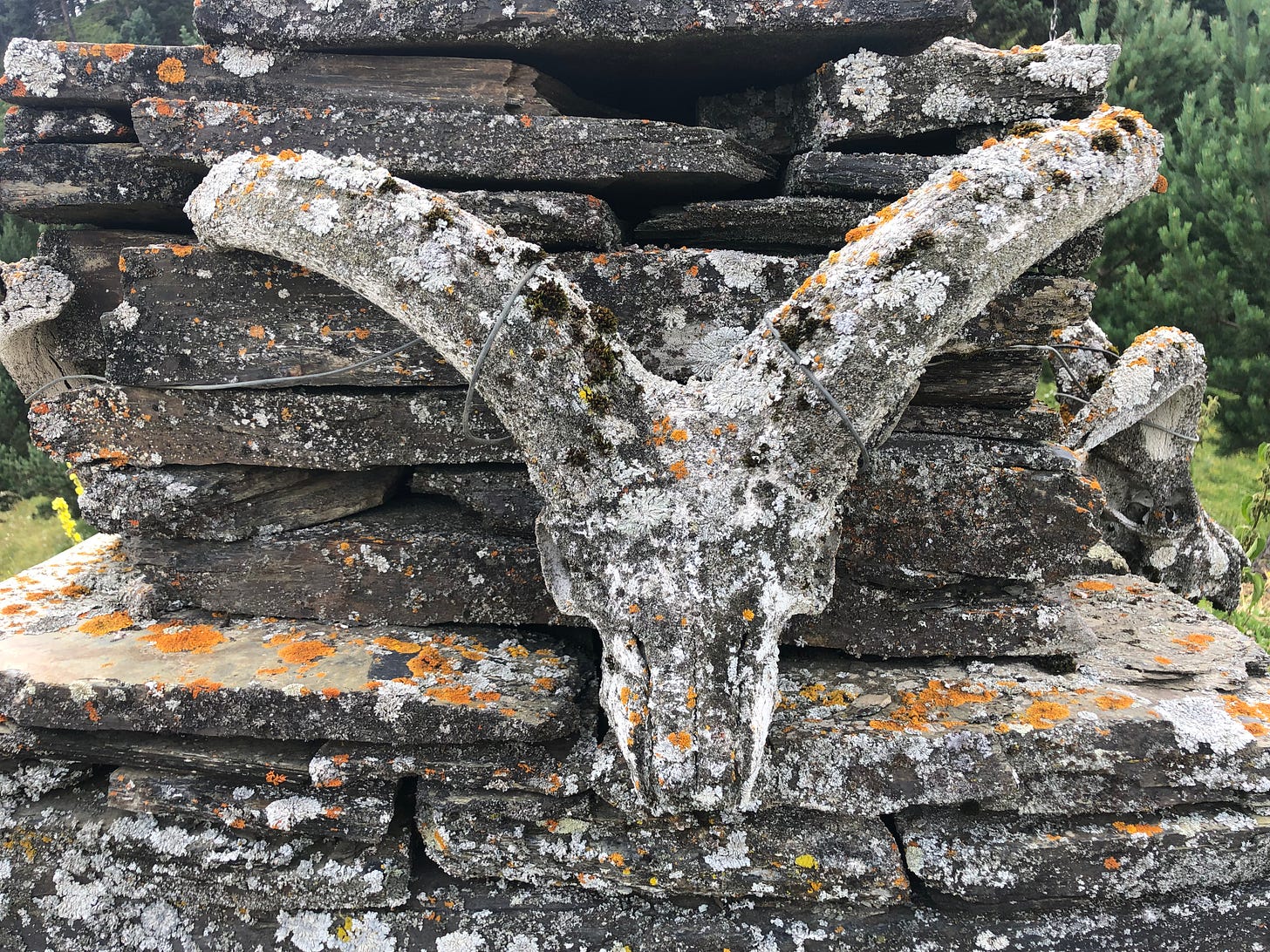
This is so cool! I only kill a few sheep a year, but I’d be open to case skinning one or two in this method if you know of any US based cheese makers who would be interested in trying the technique.